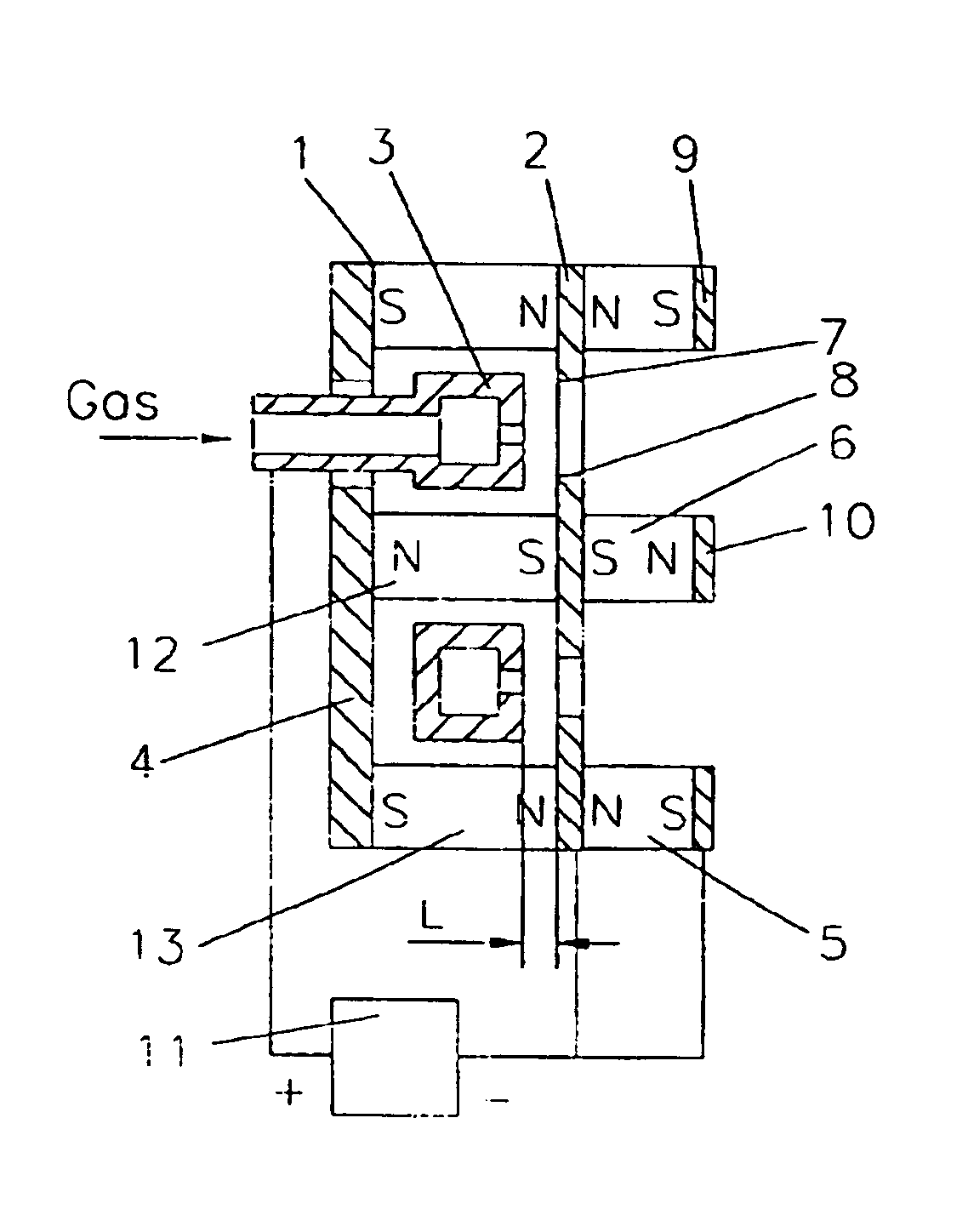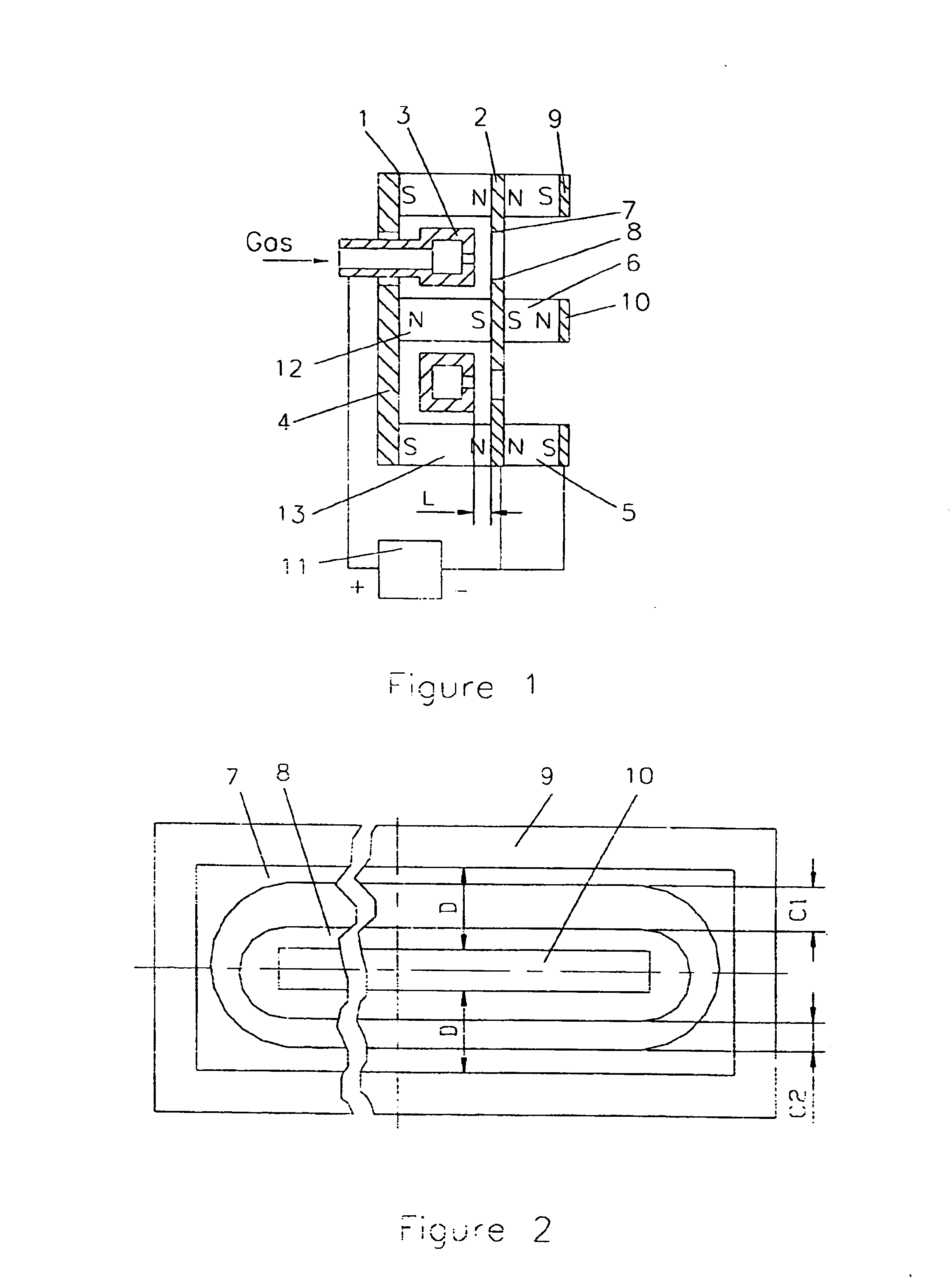Ion sources
a technology of ion sources and ion beams, applied in the field of plasma technology, can solve the problems of limited application in a broad range of desired ion beam processes, current available ion sources are not suited to producing the above mentioned required conditions, etc., and achieve greater and more uniform ion acceleration, improve the uniform distribution of magnetic field, and increase the magnetic field gradient
- Summary
- Abstract
- Description
- Claims
- Application Information
AI Technical Summary
Benefits of technology
Problems solved by technology
Method used
Image
Examples
first embodiment
The ion source, in accordance with the invention, (see FIGS. 1 through 3) is comprised of an enclosure 1 having an end wall 2 provided with a closed loop exit hole for ion emission made in the form of an elongated closed loop emission slot. An anode 3 is arranged inside enclosure 1 opposite to the emission slot. The ion source is further provided with a gas distributor, which may be structurally combined with anode 3. The magnetic system of the device is comprised of magnetomotive force sources, pole pieces and magnetically permeable wall 4 of enclosure 1. The magnetomotive force sources are made in the form of permanent magnets 5 and 6 arranged on the outside of enclosure 1 along edges of the closed loop emission slot. End wall 2 is manufactured of magnetically permeable material and is also a part of the magnetic system. The parts of end wall 2, separated by the closed loop emission slot, function as pole pieces 7 and 8 defining the first pole gap downstream in the ion emission di...
second embodiment
The extended cylindroid beam ion source made according to the invention (see FIGS. 9 through 12) is comprised of an enclosure 18 with an end wall 19 provided with a closed loop slot-shaped exit hole for ion emission. An anode 20 is located inside enclosure 18 opposite to the closed loop ion emission hole. The ion source is further comprised of a gas distributor which may be structurally combined with anode 20. The magnetic system of the device includes magnetomotive force sources made in the form of permanent magnets 21,22 and pole pieces 23,24 and 25,26.
The parts of end wall 19 separated by the closed loop emission hole serve as pole pieces 23 and 24 which define a first pole gap downstream in the direction of ion emission. Pole pieces 25 and 26 define a second pole gap opposite to the first pole gap in the direction of ion emission. Permanent magnets 21 and 22 are arranged between pole pieces 23,25 and 24,26, respectively. The polarity of magnets 21 and 22 (N-S and S-N) is selecte...
PUM
 Login to View More
Login to View More Abstract
Description
Claims
Application Information
 Login to View More
Login to View More - R&D
- Intellectual Property
- Life Sciences
- Materials
- Tech Scout
- Unparalleled Data Quality
- Higher Quality Content
- 60% Fewer Hallucinations
Browse by: Latest US Patents, China's latest patents, Technical Efficacy Thesaurus, Application Domain, Technology Topic, Popular Technical Reports.
© 2025 PatSnap. All rights reserved.Legal|Privacy policy|Modern Slavery Act Transparency Statement|Sitemap|About US| Contact US: help@patsnap.com



